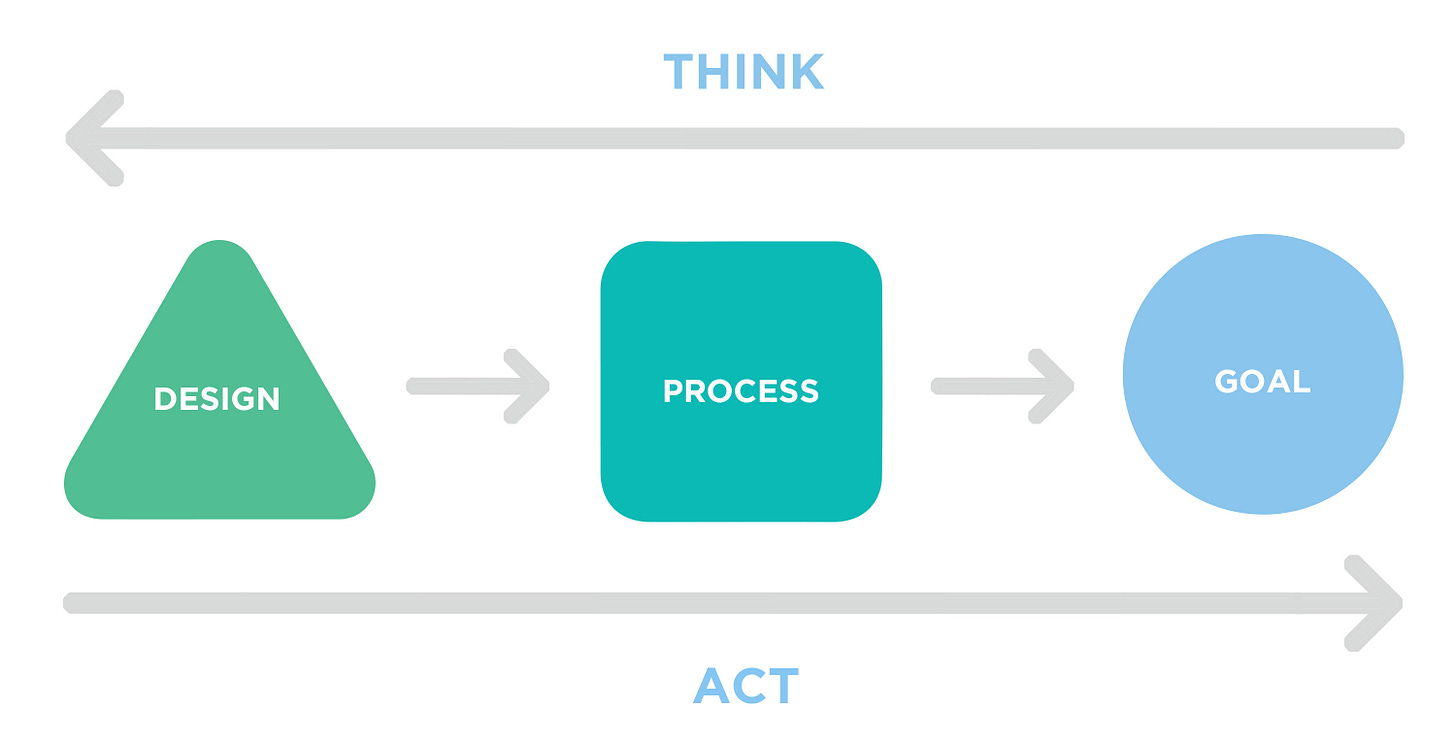Simple Design and Complex Design
Healthy Leaders | Issue 56
Welcome to Issue 56 of Healthy Leaders. In this issue, everybody’s designing — and you can too.
Hello friends,
Welcome back to our ongoing conversation on healthy Christian leadership and leader development.1
Building healthy leaders involves having both a goal and a process, each of which must be holistic in order for growth to occur. The final piece of the building puzzle, then, is designing a contextual process that will actually get us to our goal.
We visualize it this way:
As builders of healthy leaders, we must think backwards from our end goal in order to design a holistic process. Then, we act forwards, leading our emerging leaders through the Four Dynamic process we’ve designed to accomplish our goal.
Here’s another way to look at it:
If this sort of map-creation seems overwhelming — as in, how could you ever account for all of the complexities of building a leader?? — don’t despair! Design doesn’t have to be complicated to be effective. In fact, the more complicated it becomes the less effective it can be!
Here’s Malcolm with more:
One of the important things to remember, whether you are designing for your own growth, your leaders or your church, is that you don’t have to do it all at once.
As you prayerfully and carefully evaluate the specific needs of each of these areas, you’ll begin to see priorities. Imagine a barrel made up of many staves of different levels. You could try to fill it up with water, but the water will always spill over the lowest stave. In order to increase the barrel’s capacity, you have to fix the staves — starting with the lowest one. Likewise, in determining which goal to prioritize, look for the areas of greatest weakness. Remember: the key to design is to clearly define.
We have a free evaluation tool that can help you determine the most important growth areas if you’re interested: the 5C Checkpoint.
What about you?
One of our friends in East Asia, after going through a training that focused on design, shared a really insightful comment:
I learned that design requires love. I was greatly inspired with the question: If you think of others as your own children, how will you design ways to build them? I realized that many times I don’t have such a close relationship with them, so it is easier to design things out of legalism instead of love.
This is a profound truth, and one that is often neglected in training contexts around the globe. Creating effective designs for growth requires that we really know and care for the person for whom we design — and that sort of connection is rooted in real relationship and comes through a lifestyle of working with your leaders.
Who in your life is God calling you to build right now? As you put together a design for their growth, consider how you might come alongside them instead of assign them something to do on their own.
If you’re looking for a spiritual dynamic to include in your design, pray with them.
If you’re looking for a relational dynamic, eat a meal with them.
If you’re looking for an experiential dynamic, work alongside them.
And if you’re looking for an instructional dynamic, read the Bible together.
Your presence and love for them is going to be a deciding factor in their growth.
We’d love to hear how you’ve seen this at work in your life and others through the years. Let us know in the comments!
Until next time, we’re with you.
— Chris
Recommended Resources
Core Model Brief: Summary of the Principles of Healthy Leader Development
Book: Building Leaders
For more resources, visit our website.
Thanks to our friends at Fifty-Four Collective for putting together a comprehensive set of video courses for growing healthy organizations, starting with this series of courses on leadership by Malcolm. We’ll be using some of their videos and some of our own. Be sure to check out what they’re doing!




